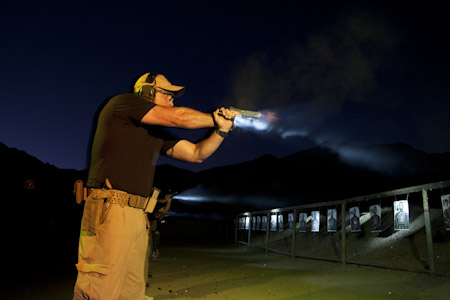
Square range low light training on a two dimensional target – a starting point. (Photo courtesy of Jeremy Stafford)
This is PART TWO of a two part series on low light training. Click HERE for Part One.
Normally, during low-light training, we are on the firing line with several co-workers. Every one turns on their lights, illuminating a two dimensional target at the same distance. This turns your low-light shoot into darn near daylight. Then they shoot. They do not really get to experience the capabilities and limitations of their issued and/or chosen gear.
It should not have come as a surprise, but it did – batteries have a finite life. At some point, they’ve done enough and they need to be replaced. We were unpleasantly surprised at how many showed up with dim to nearly dead batteries in the hand held and weapon mounted lights; this included the standard issue Streamlight SL-20 flashlights which fit into chargers hardwired into each of our patrol and detective cars. Consider whether or not you are willing to bet your life on that poor level of light in your next encounter.
Eyes were opened when people could see the differences between the quality and type of light coming from both LEDs (light emitting diodes) and traditional incandescent bulbs. The different types of light and the quality of each can have an effect on some people, though not everyone. Incandescent bulbs might have a yellowish tint while some older LEDs can display a bluish light.
A few hundred deputies went through this training over the course of three months. Some identified everything down range – whether in waistbands, hands or on the floor.
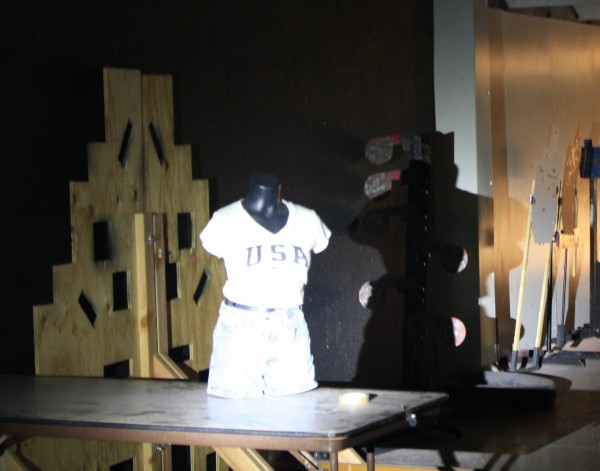
Pretty bright light at five yards. Do you see the pocket clip for the knife? Any indicator of the handgun in the waistband?
The vast majority saw some of the weapons but not all of them.
We had a couple people who claimed to have seen absolutely none of the weapons on any of the mannequins, even though they each had fully functional lights that appeared more than bright enough for the task.
After the cops had their turn viewing the mannequins we kept them on the range so they could see what their co-workers experienced – just from a different angle. Angles are interesting in the low-light world because of the radical changes they can create. Move just a little bit off to the side and catch a shadow or shape in a completely different way. A number of them commented on how what they could and could not see changed once they moved off to the side of the target.
Just like you don’t always see the whole animal when hunting, you may not always see the whole weapon – or even a lot of it – in low light. Look for the parts.
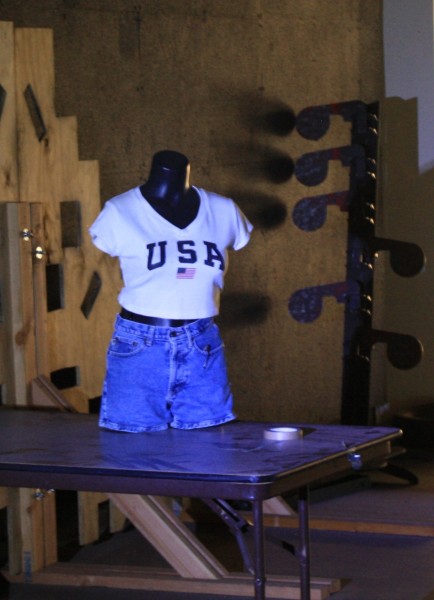
About middle of the road in terms of brightness. The pocket clip stood out with this level of light.
One has to continuously look around, up, as well as down in every environment. Many missed seeing the gun at the feet of the second mannequin. So, you get them to drop the knife and now you order them onto the ground right where the gun is. Might not have been the best idea.
One co-worker told me they saw the shotgun on the second mannequin. “A shotgun?”
“Yes, its under the shirt, in the back, right?” This was just as much of a learning point as those who had missed seeing weapons that were there.
After the training was done, a fair amount of batteries were replaced and it sounded like people were now paying attention to them; others bought new lights. Hopefully they kept up on the battery issue with them. Time will tell.
Putting this together did not cost us – neither the instructors nor the office – any money. Everything we used was either donated, loaned or we already had it. We added this segment to an already scheduled low-light training.
This wasn’t the End All of Low Light Training; letting everyone experience what they could or could not see with their equipment it is just one part of the equation.



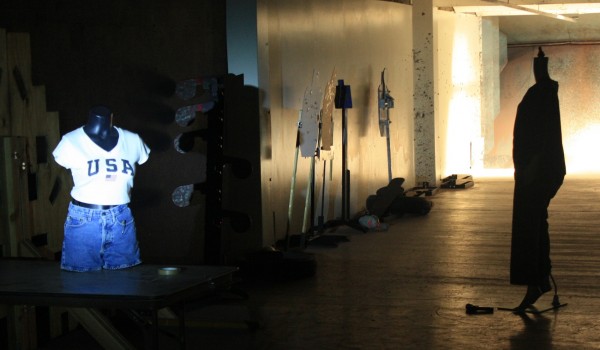
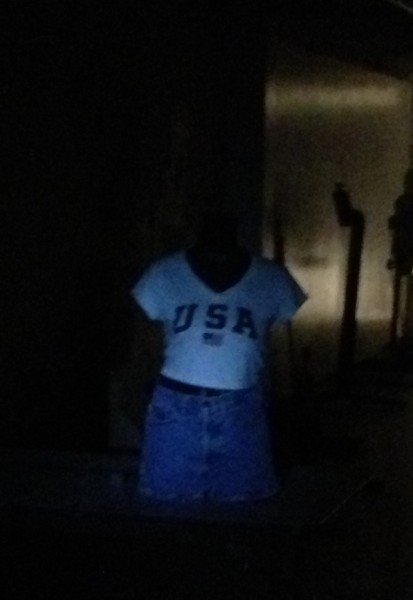
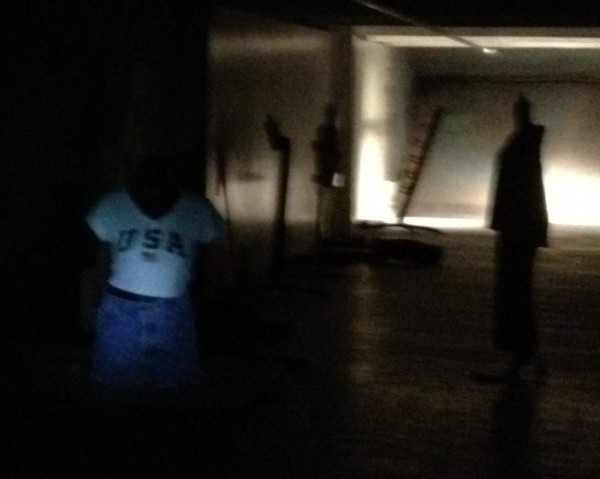

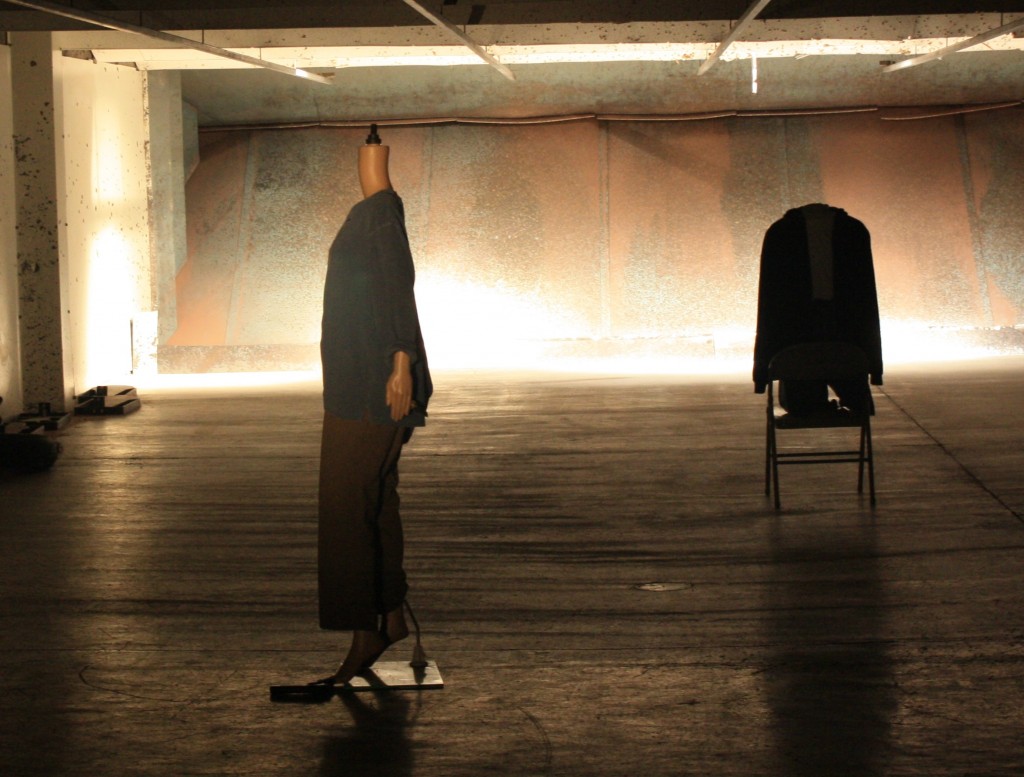
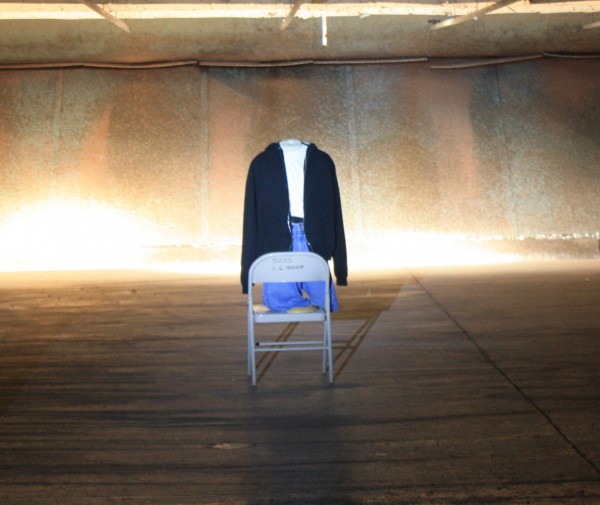
Great articles Eric. I read #1 and now #2. I am going to steal this for both the SWAT Team and Patrol at my PD. So many times low light training is just qualification done at night. Some people still do not have weapon mounted lights for their pistols or long guns because they do not see the need. Every time you qualify you have several other people doing the same thing in line with you and someone is almost certain to have a light. Some good quality lights can throw out enough light for several Officers to see a target. I also like the doing more with less approach. PD budgets are getting tight and you have to be creative. Already talked to the local Salvation Army today and networking has commenced.